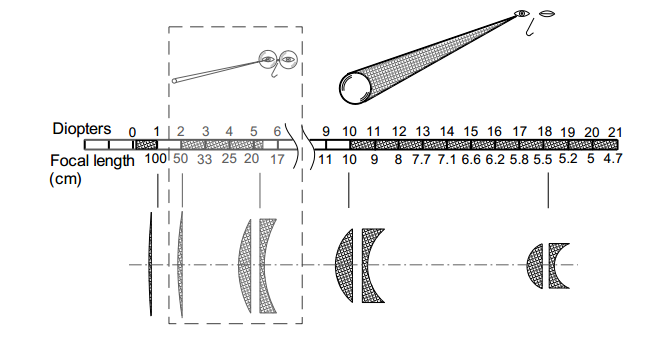Galileo’s Secret Telescope Technology Revealed
The Renaissance physicist, mathematician, philosopher and astronomer Galileo Galilei is perhaps best known for his work on gravity, relative motion and the discovery of numerous astronomical objects such as Jupiter’s four largest moons, the phases of Venus and so on.

But just as remarkable is Galileo’s work as an optical engineer on the design of the telescope. Galileo didn’t invent the telescope but he did adapt the design of the spyglass for astronomical purposes.
In fact, Galileo’s improvements were extraordinary. Between the summer 1609 and the beginning of January 1610, Galileo increased the magnification of his telescope by a factor of 21. He also introduced a number of modifications, such as the ability to control its aperture, that helped to reduce optical aberrations.
It was these changes that turned an ordinary spyglass into a revolutionary astronomical instrument.
So an interesting question is to ask what theory of optics Galileo used to make these advances. The standard view is that Galileo’s improvements were an educated extrapolation of the optical ideas used to design spectacles.
But today, Yaakov Zik and Giora Hon at the University of Haifa in Israel say that Galileo’s understanding of optics must have been much more detailed than that of a standard spectacle-maker. Indeed, they argue that the improvements Galileo made to the telescope could only have been possible with a new theory of optics as revolutionary as the device itself.
Galileo first published his astronomical discoveries in March 1610 in a pamphlet called Siderus Nuncius. At the beginning of the leaflet, Galileo described the properties a good astronomical telescope should have and attempted to convince his readers of the reliability of his observations by describing how its optical performance could be calibrated.
In doing this, Galileo reveals the extraordinary depth of his optical knowledge, say Zik and Hon. For example, he was able to calculate the magnification of his telescope and modify its aperture to minimise aberrations.
He had a focus shift that adjusted the length of the telescope showing that he was aware of the optical power of lenses which he linked to their “lengths”.
He also defined and calculated the apparent field of view of his telescope and used this to measure angular distances between celestial bodies.
Zik and Hon spend some time discussing these new features in the context of the optical technology of the time. “Could these great achievements be accomplished by extending [traditional] optics of the spectacle makers in a lightly theorized practice based on “systematized experience”?, they ask.
Their answer is unequivocal. “We think not.” Instead they argue that Galileo must have had had a much deeper understanding of optics. “We submit that Galileo had a novel optical theory which he did not want to divulge, but his practice and the extant instruments display it,” they say.
That’s an interesting conclusion that testifies to Galileo’s remarkable achievement. But we’ll almost certainly never know what Galileo’s optical theory consisted of—he never published his ideas in this area.
However, it’s not beyond belief that he stood head and shoulders above his peers in this respect, as in many others. There are certainly many individuals in history who have made great strides beyond the state-of-the-art of the time. Zik and Hon’s work show that Galileo is clearly one of them.
Ref: arxiv.org/abs/1307.4963 : Galileo’s Knowledge Of Optics And The Functioning Of The Telescope
Keep Reading
Most Popular
Large language models can do jaw-dropping things. But nobody knows exactly why.
And that's a problem. Figuring it out is one of the biggest scientific puzzles of our time and a crucial step towards controlling more powerful future models.
The problem with plug-in hybrids? Their drivers.
Plug-in hybrids are often sold as a transition to EVs, but new data from Europe shows we’re still underestimating the emissions they produce.
Google DeepMind’s new generative model makes Super Mario–like games from scratch
Genie learns how to control games by watching hours and hours of video. It could help train next-gen robots too.
How scientists traced a mysterious covid case back to six toilets
When wastewater surveillance turns into a hunt for a single infected individual, the ethics get tricky.
Stay connected
Get the latest updates from
MIT Technology Review
Discover special offers, top stories, upcoming events, and more.